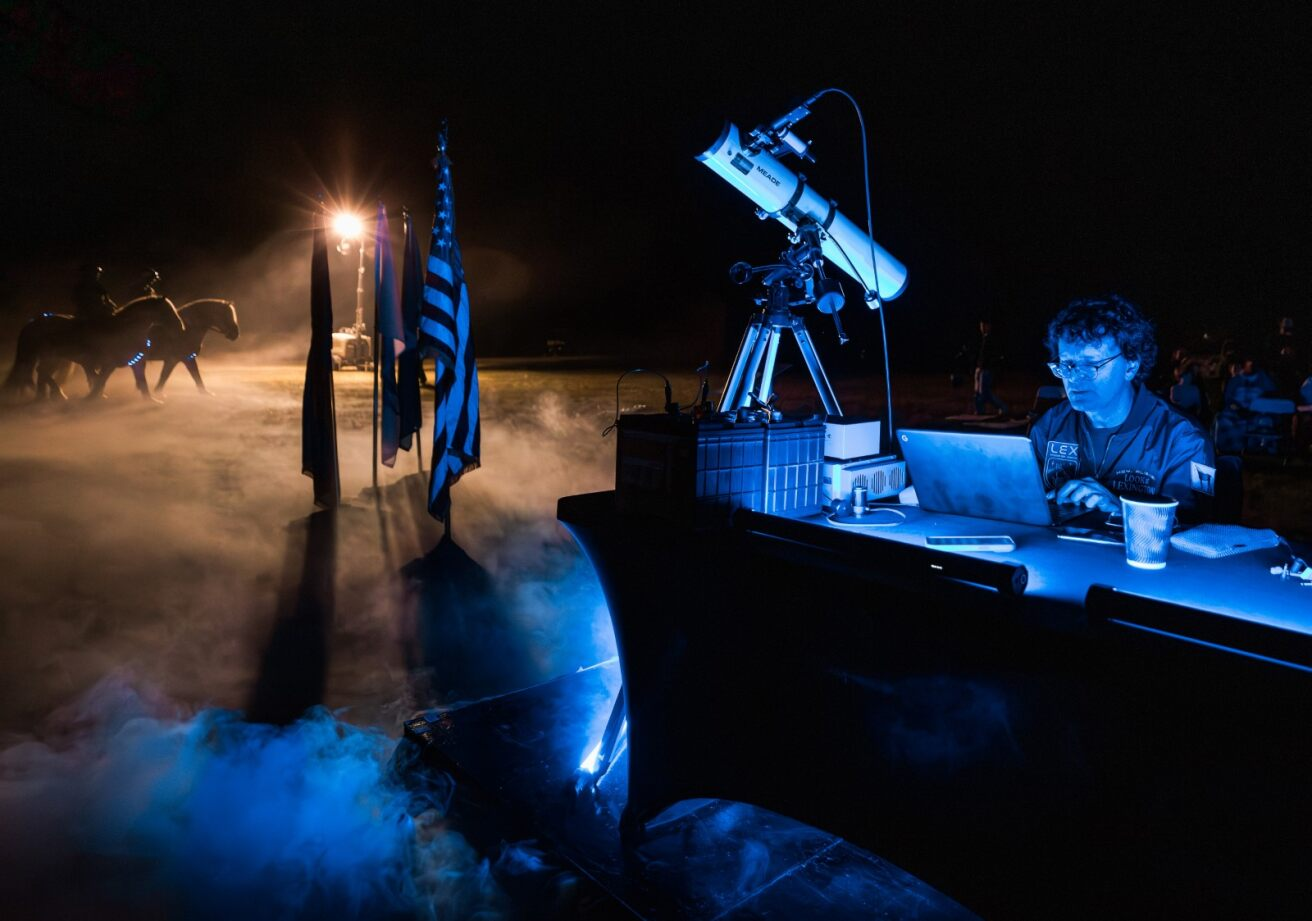The city of Lexington, Kentucky has sent a message via laser to the TRAPPIST-1 system, officially in the hope of attracting tourists from one of the many Earth-like planets there. Some may suspect the real agenda is to attract visitors from closer to home, but we’ll let you be the judge of that.
There’s plenty of debate as to whether humanity should be trying to make contact with aliens, lest alerting them to our presence sparks an invasion. Stephen Hawking was just one of those who considered the risk too great. Others think aliens are unlikely to do anything worse to us than we are doing to ourselves, and we should seek their advice on how to build advanced technology that doesn’t make the planet uninhabitable.
In the lead-up to Christmas, tourism agency VisitLEX placed a powerful laser beam at the Kentucky Horse Park and pointed it at the TRAPPIST-1 system, in the direction of Aquarius. The laser’s pulse converts into a picture that includes some prime numbers, perhaps in case they think we invented lasers without knowing primes. Also included are images of the periodic table with the elements most essential for Earth-life marked, diagrams of some of our favorite molecules, and encouragement to drop in on Lexington. All this is packed into a Bitmap, followed by scenes and music from the area.
The image resembles (or might be seen as a parody of) one sent out by the Arecibo Telescope in 1974. However, the Aricebo message was basically a proof of what humans are capable of. The destination was globular cluster M13. In the unlikely event anyone received, decoded, and replied to it, the round trip would be 42,000 years – you’d be brave to bet humans would still be around to need to fear the consequences.
Lexington showing off its traditional image, and aspects of the high-tech hub it wishes to become.
Image Credit: VisitLEX
TRAPPIST-1, on the other hand, is only 39 light years away. The VisitLEX website counts down the days, and indeed even the minutes, until the message reaches its destination. It’s likely anyone (or anything) enticed by the message will take far longer to get here, but potentially, the first bookings could be made in less than 80 years, which Dr Robert Lodder of the University of Kentucky noted would be within “somebody’s lifetime”.
No one knows if any of the TRAPPIST-1 planets support life, let alone technological civilizations. However, there are 3-4 rocky planets in the habitable zone. With the system being at least a billion years older than ours, there’s been plenty of time for spaceflight-capable aliens to evolve.
SETI scientists and linguists provide their own tongue-in-cheek commentary on why anyone who has voyaged across the vastness of space for decades or centuries should skip more famous cities and make Lexington their first stop.
Lexington Kentucky has styled itself the “Horse Capital of the World”. When seeking to draw in visitors, they traditionally rely on equines, bourbon, and bluegrass. Unsurprisingly, these feature prominently on the accompanying website, and there’s a nod to each in the message itself.
On the other hand, the whole event is perhaps a sign that the home to the University of Kentucky is trying to broaden its image, featuring the Living Arts and Science Center and the Explorium children’s museum. Curiously, being the resting place of the real Cocaine Bear doesn’t figure. Perhaps they think aliens are not up on popular films.
A small crowd of Lexington enthusiasts came out to celebrate the sending of the image. They’ll be sorry if the aliens decide they like what they see so much they invade, but then we all will.
Image Credit: VisitLEX
VisitLEX got FAA approval for the message, presumably because whoever ticked the box figured they would not only be retired but dead before any consequences were experienced.
“Lexington would be a great place to make first contact,” Lodder said on the VisitLEX website. “You can land your spacecraft here. You can see the Bluegrass. You may even be able to ride a horse, depending on how big you are.”
Source Link: City Sends First Interstellar Laser-Beamed Tourism Campaign To Attract Alien Visitors
